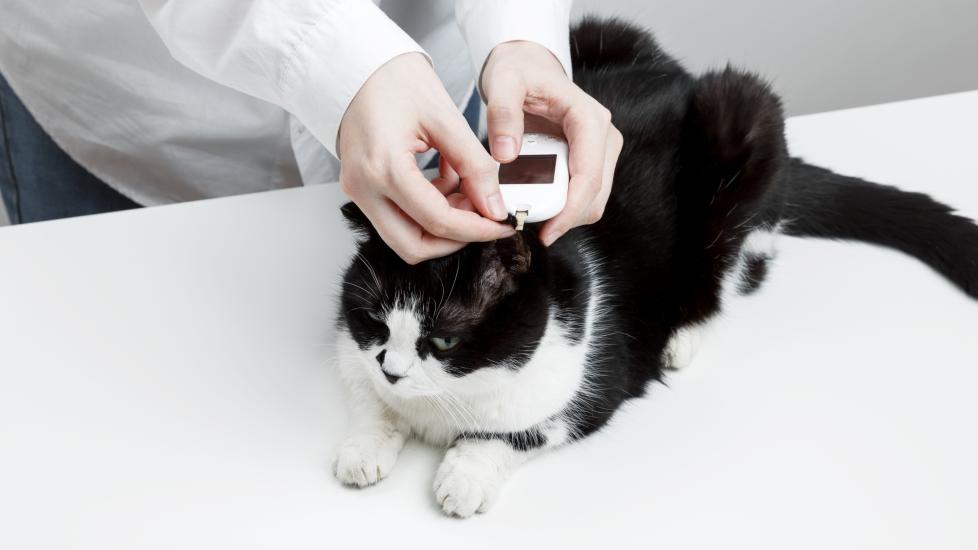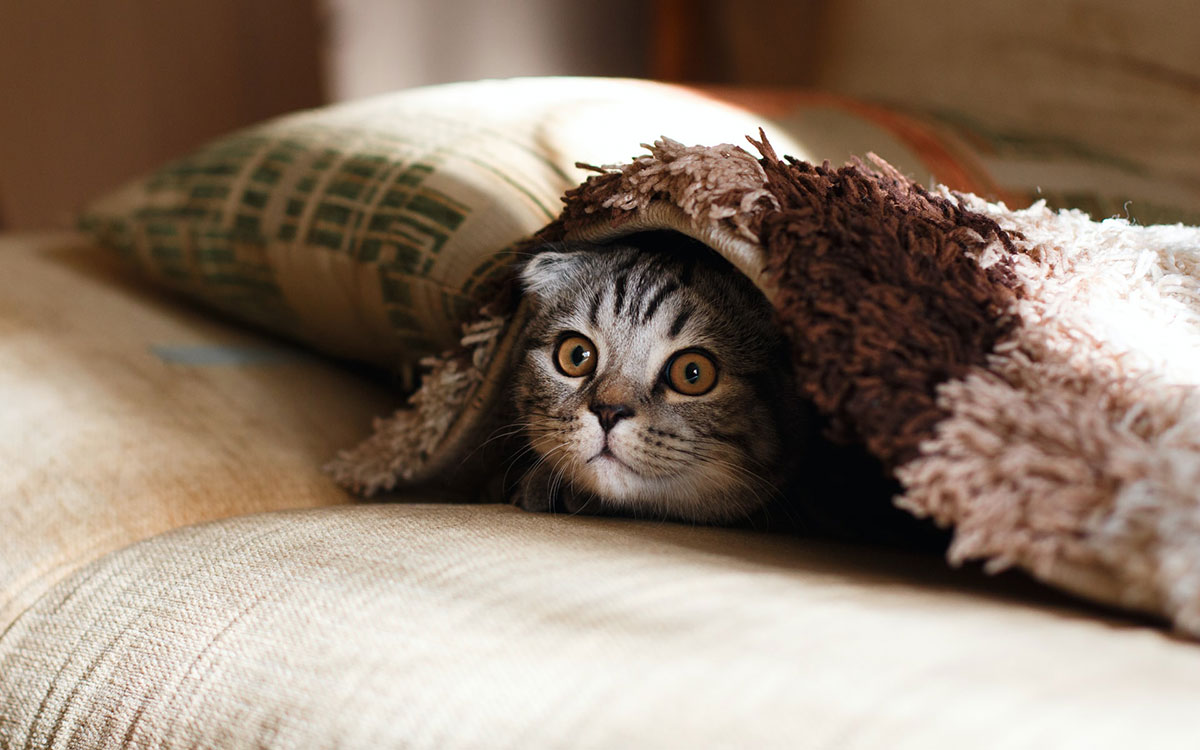Diabetes in cats is a growing concern. It’s a serious health issue.
Understanding diabetes is crucial for cat owners. Diabetes affects how a cat’s body uses sugar, leading to high blood sugar levels, which can cause various health problems for your feline friend. Identifying diabetes early is important, as it helps manage the disease effectively.
Cats with diabetes may show signs like increased thirst and frequent urination. They might lose weight despite eating well. Treatment usually involves insulin and a special diet. While diabetes can be challenging, knowing the causes, signs, and treatments empowers you to care for your pet. This guide will explain everything you need to know. Your cat’s health is in your hands. Let’s learn how to manage diabetes in cats together.
Introduction To Feline Diabetes
Understanding feline diabetes is crucial for cat owners who want to ensure their furry friends live healthy and happy lives. Diabetes in cats is a serious condition in which the body struggles to regulate blood sugar levels. This disease requires attention and care, but with the proper knowledge, it can be managed effectively.
According to the Merck Veterinary Manual, feline diabetes primarily results from insulin resistance and β-cell dysfunction.
👉 Merck Vet Manual – Diabetes Mellitus in Cats
Prevalence Among Cats
Diabetes is becoming more common among cats, particularly those that are overweight or older. Sedentary lifestyles and diets high in carbohydrates contribute to this trend. Have you noticed your cat gaining weight lately? It’s essential to monitor their health closely.
A retrospective study by Prahl et al. (2003) found that diabetes affects approximately 1 in 230 cats, with obesity and age as leading risk factors.
👉 Prahl et al., J Vet Intern Med (2003)
Veterinarians often see cases of feline diabetes in clinics, highlighting the importance of routine check-ups. Regular vet visits can catch diabetes early, making treatment more manageable. If you’re unsure about your cat’s health, consider scheduling an appointment with your vet.
Impact On Cat Health
Diabetes can significantly affect your cat’s well-being. You might observe increased thirst and urination. Common signs indicate that your cat’s body is struggling to process sugar. Have you noticed your cat drinking more water than usual?
Untreated diabetes can lead to more severe health issues, including neuropathy and liver disease. This emphasizes the need for prompt medical intervention. Being proactive can save your cat from unnecessary suffering. If your cat shows any unusual symptoms, act quickly.
Managing diabetes involves diet changes and possibly insulin injections. It may sound daunting, but many cat owners successfully manage their pets’ diabetes with a bit of commitment. Are you ready to take control of your cat’s health journey?
Common Causes Of Diabetes In Cats
Diabetes in cats often stems from obesity and genetic factors. Poor diet and lack of exercise can worsen the condition. Monitoring weight and ensuring a balanced diet are crucial in preventing diabetes.
Cats, much like humans, can develop diabetes. Understanding the common causes of this condition can help you take preventive measures and ensure your feline friend lives a healthy life. Let’s delve into the primary factors that contribute to diabetes in cats.
Genetic Factors
Some cats are more prone to diabetes due to their genetic makeup. Just like people, certain breeds or familial lines have a higher risk. For instance, Burmese cats have been noted to have a higher incidence of diabetes. If your cat is from a breed known for this predisposition, monitoring their health closely is crucial. Regular vet check-ups can help catch any early signs, giving your cat a better chance at a happy everyday life. Does your cat belong to a high-risk breed?
Diet And Lifestyle
Diet plays a significant role in the development of diabetes in cats. Cats that consume a high-carbohydrate diet are more likely to gain excess weight, leading to insulin resistance. Feeding your cat a diet rich in protein and low in carbohydrates can help maintain a healthy weight. A sedentary lifestyle also contributes to obesity, another risk factor for diabetes. Encourage your cat to stay active with toys, play sessions, and safe outdoor exploration. Have you considered how your cat’s daily routine might affect their health? By being mindful of these factors, you can make informed decisions that might help prevent diabetes in your beloved pet.
Research by Backus et al. (2010) highlights how high-protein, low-carb diets help maintain glucose control in diabetic cats.
👉 Backus RC et al., Study – NCBI
Recognizing Signs Of Diabetes In Cats
Diabetes in cats can be tricky to spot. Knowing the signs is crucial for early detection. Cats often hide their discomfort, making it harder for owners to notice issues. Recognizing changes in their health can make a big difference.
Physical Symptoms
Watch for increased thirst in your cat. Drinking more water could be a warning sign. Frequent urination often follows. Weight loss is another symptom. Even with a normal appetite, cats may lose weight. Notice any changes in their coat. A dull coat can indicate diabetes. Lethargy is common. If your cat sleeps more, it might be unwell.
Behavioral Changes
Diabetes affects behavior, too. Cats may seem more irritable. Sudden mood swings are common. They might avoid playing or interacting. Less interest in activities can be a red flag. If your cat hides more, take note. Anxiety can increase. Stressed cats often show signs of illness. Look for unusual actions. Changes in routine suggest a problem.
Diagnosis Methods For Feline Diabetes
Diagnosing diabetes in cats can be crucial for effective treatment. If you suspect your cat may have diabetes, it’s essential to understand the diagnostic methods available. These tests can help confirm the presence of the disease and guide the treatment plan. Identifying diabetes early can significantly affect your cat’s health and quality of life. Let’s dive into the two primary diagnostic methods: blood tests and urinalysis.
Blood Tests
Blood tests are often the first step in diagnosing feline diabetes. They measure glucose levels in your cat’s blood. Elevated blood glucose levels might indicate diabetes. A vet usually conducts a fasting glucose test, requiring your cat to fast overnight before the test.
Imagine having a tool that can reveal hidden health issues before they become severe. Blood tests do just that. They provide a snapshot of your cat’s internal health. Regular testing can catch diabetes early, minimizing complications.
Urinalysis
Urinalysis complements blood tests in diagnosing diabetes. It checks for the presence of glucose in your cat’s urine. If glucose appears in the urine, it often confirms diabetes. This test also assesses kidney function and checks for infections.
Have you ever wondered if your cat’s litter box habits could tell you something? Changes in urination frequency might hint at diabetes. Urinalysis can confirm these suspicions. It’s a simple yet effective tool in your diagnostic toolkit.
Is your cat showing signs of diabetes, like increased thirst or frequent urination? Consider scheduling these tests. Early diagnosis can lead to better management and improved outcomes. It’s more than just tests; it’s about understanding and caring for your feline friend.
Managing Diabetes In Cats
Diabetes in cats involves insulin issues affecting sugar levels. Common signs include increased thirst, hunger, and weight loss. Treatment often includes insulin injections and diet changes to manage blood sugar effectively.
Managing diabetes in cats requires a careful balance of diet, exercise, and ongoing veterinary care. If your feline friend has been diagnosed with diabetes, it can feel overwhelming at first. However, you can help your cat live a healthy and happy life with the right strategies. Let’s explore some practical ways to manage this condition.
Dietary Adjustments
Diet plays a crucial role in managing diabetes in cats. A low-carbohydrate, high-protein diet can help regulate your cat’s blood sugar levels. Consider consulting with your veterinarian to find the best food options available. You might wonder what changes you need to make in your cat’s feeding routine. Consistent meal times are essential. Feeding your cat at regular intervals can prevent spikes in blood sugar. Switching to a prescribed diet can make a significant difference. Many cats respond well to high-quality canned foods with fewer carbohydrates than dry kibble. Have you checked the nutritional content of your cat’s current diet?
Exercise Recommendations
Regular exercise is beneficial for diabetic cats. It helps with weight management and improves insulin sensitivity. Find activities that your cat enjoys, like interactive toys or laser pointers. How often does your cat play or move around? Aim for at least 15 to 20 minutes of playtime each day. It might seem small, but it can significantly impact your cat’s health. Have you noticed a decline in your cat’s activity levels? Encourage movement by placing food bowls in different locations or using puzzle feeders. Small changes can keep your cat engaged and active. These steps will not only manage your cat’s diabetes but also enhance their quality of life. Remember, consistency is key. Consult with your vet regularly to adjust your approach as needed. Your dedication can lead to a healthier, happier feline companion.
Medical Treatments For Diabetic Cats
Diabetes in cats requires careful medical management to ensure their well-being. Treatment plans vary based on the cat’s needs and health condition. Some cats may need insulin injections, while others might benefit from oral medications. Understanding these options can help cat owners manage their pet’s diabetes effectively.
Insulin Therapy
Insulin therapy is crucial for many diabetic cats. It helps regulate blood sugar levels. Most cats need daily injections. Insulin dosage depends on the cat’s size and health. Your veterinarian will guide you in administering insulin properly. Monitoring blood sugar levels is essential. Regular checks ensure the cat remains stable. Adjustments in insulin dosage may be needed.
A clinical trial by Roomp & Rand (2009) demonstrated successful diabetes remission in cats using glargine insulin and a low-carb diet.
👉 Roomp & Rand, JFMS Study
Oral Medications
Some diabetic cats respond well to oral medications. These drugs help control blood sugar levels. Not all cats are suitable candidates. Your vet will assess if oral medicines are right for your cat. They are usually prescribed for cats with mild diabetes. Regular vet visits are essential to monitor the cat’s response. Medication adjustments may be required. Always follow your veterinarian’s guidance for best results.
Monitoring And Care For Diabetic Cats
Diabetes in cats occurs when the body does not use insulin properly, leading to high blood sugar levels. Common signs include increased thirst, weight loss, and frequent urination. Treatments often involve insulin injections and diet changes, requiring regular monitoring and care for effective management.
Managing diabetes in cats requires a dedicated approach to monitoring and care. As a cat owner, staying vigilant and informed can make a difference in your furry friend’s health. Balancing regular vet visits with attentive home care is crucial. How can you best support your cat in this process? Let’s break it down into actionable steps for adequate care.
Regular Check-ups
Regular vet check-ups are a cornerstone of managing feline diabetes. Schedule these visits consistently to track your cat’s progress and adjust treatments as needed. Your vet can assess glucose levels and overall health, ensuring an effective treatment plan. During these visits, ask questions and clarify doubts. Understand how your cat’s medication works. This knowledge empowers you to spot any irregularities early. Consider keeping a health journal for your cat. Record weight changes, mood shifts, or any unusual behavior. It can be a valuable resource for your vet.
The AAHA Diabetes Guidelines recommend regular monitoring, home glucose tracking, and strict routines for long-term success.
👉 AAHA Diabetes Management Guidelines
Home Care Tips
At home, maintaining a routine is key. Establish a feeding schedule that aligns with insulin shots. Consistent meal times help regulate blood sugar levels. Choose a balanced diet recommended by your vet. High-protein, low-carbohydrate options are often beneficial. Monitor your cat’s activity levels. Encourage gentle play and exercise, which aids in glucose management. Be observant of signs like excessive thirst or lethargy. These may indicate fluctuating sugar levels. Create a calm environment for your cat. Stress can impact diabetes so that a peaceful home can contribute to stability. Be patient and attentive. Your understanding and care are vital parts of your cat’s diabetes management. Does your cat have a favorite spot or toy? Use these as tools to motivate movement and engagement. Focusing on small, consistent efforts can significantly impact your cat’s well-being.
Preventing Diabetes In Cats
Cats can develop diabetes due to obesity, genetics, or poor diet. Symptoms include increased thirst, frequent urination, and weight loss. Early treatment with diet changes and insulin can help manage the condition effectively.
Preventing cat diabetes is a responsibility that falls on pet owners’ shoulders. It requires diligence, awareness, and a commitment to your cat’s well-being. By making informed choices and watching for early signs, you can significantly reduce the risk of diabetes in your feline friend.
Healthy Lifestyle Choices
A healthy lifestyle for your cat begins with a balanced diet. Ensure your cat’s meals are rich in proteins and low in carbohydrates. Opt for high-quality cat food or consult your vet for personalized dietary advice. Regular exercise is another cornerstone of a healthy lifestyle. Use toys like feather wands or laser pointers to engage your cat in play sessions. Even a few minutes of active play daily can help maintain a healthy weight. Don’t forget about hydration. Cats often don’t drink enough water. Please encourage them by providing fresh water daily or using a cat fountain to pique their interest.
Early Detection Strategies
Early detection of diabetes in cats can make a significant difference in treatment. Pay attention to subtle changes in your cat’s behavior or habits. Increased thirst or frequent urination could be early warning signs. Regular veterinary check-ups are crucial. These visits can catch health issues before they become serious. Ask your vet to monitor your cat’s blood sugar levels if there are any concerns. Be proactive. If your cat seems off, trust your instincts. A timely visit to the vet can prevent a minor issue from becoming a significant health problem. What small changes can you make today to protect your cat’s health? Your decisions now can lead to your furry friend’s healthier, happier future.
Living With A Diabetic Cat
Understanding diabetes in cats involves recognizing causes like obesity and genetic factors. Symptoms may include increased thirst and urination. Treatments often include insulin injections and dietary changes. Regular veterinary check-ups are crucial for managing this condition effectively.
Living with a diabetic cat involves dedication and love. Cats, like humans, can live fulfilling lives with diabetes. Understanding their needs is crucial. Regular monitoring and care improve their quality of life. Owners play a key role in their pet’s health. With proper support, diabetic cats can thrive.
Support For Pet Owners
Managing a diabetic cat requires commitment. Pet owners need guidance. Veterinarians offer vital information and support. Online communities are helpful too. Sharing experiences helps. Learn from others who have diabetic cats. Pet owners should seek advice and stay informed. Support makes managing diabetes easier.
Quality Of Life
Diabetic cats can live happily. Quality of life is important. A balanced diet and insulin keep cats healthy. Regular check-ups are essential. Monitor their weight and energy levels; a stable routine benefits diabetic cats. Comfort and love improve their well-being. Happy cats bring joy to their owners.

Frequently Asked Questions
What Triggers Diabetes In Cats?
Diabetes in cats is often triggered by obesity, genetics, and poor diet. Lack of physical activity also increases risk. Monitoring weight and providing balanced nutrition can help prevent diabetes. Regular vet check-ups are crucial for early detection and management.
How Long Do Cats Live After Being Diagnosed With Diabetes?
With proper treatment and care, cats with diabetes can live many years. Regular vet visits, insulin therapy, and a balanced diet significantly extend their lifespan. Early diagnosis and consistent management are key factors. Always consult a veterinarian for a tailored care plan for your diabetic cat.
How To Reverse Diabetes In Cats?
Control diabetes in cats with a high-protein, low-carbohydrate diet. Regular vet check-ups are essential. Insulin therapy may be needed. Maintain a healthy weight through exercise. Monitor blood glucose levels at home. Consult your vet for personalized advice.
At What Age Do Cats Usually Get Diabetes?
Cats can develop diabetes typically between 7 and 10 years of age. Older cats are more prone to diabetes. Signs of diabetes may include increased thirst and urination. Early detection and treatment can improve a cat’s quality of life. Regular vet check-ups are essential for monitoring health.
Conclusion
Understanding diabetes in cats helps ensure better care. Early signs are crucial for treatment. Look for increased thirst and urination. Weight loss and lethargy are also common. Regular vet visits keep cats healthy. Treatment options vary. Some cats need insulin; others require diet changes.
Consistent monitoring is key. Always consult a veterinarian for advice. A healthy lifestyle reduces risks. Love and attention make a difference. Your cat deserves the best care. Stay informed and proactive. It keeps your furry friend happy and safe. Diabetes management is a journey.
Together, you can navigate it successfully.
References
- Merck Veterinary Manual. Diabetes Mellitus in Cats. merckvetmanual.com
- Prahl A, Guptill L, Glickman NW, Tetrick M, Glickman LT. Diabetes mellitus in cats: analysis of risk factors. JVIM. PubMed
- Roomp K, Rand J. Glargine insulin and low-carbohydrate diets in feline diabetes management. JFMS. PubMed
- Backus RC, et al. High-protein diets for glycemic control in diabetic cats. NCBI. Full text
- American Animal Hospital Association (AAHA). Diabetes Management Guidelines. aaha.org
🩺 Reviewed by Dr. Audrey Cook, BVM&S, DACVIM-SAIM, DECVIM-CA
Professor of Small Animal Internal Medicine
Texas A&M University, College of Veterinary Medicine
Dr. Audrey Cook is a globally recognized expert in veterinary endocrinology. With certifications in both U.S. and European veterinary medicine, she specializes in feline diabetes, insulin therapies, and chronic endocrine disorders. Her work influences best practices in clinics worldwide.






